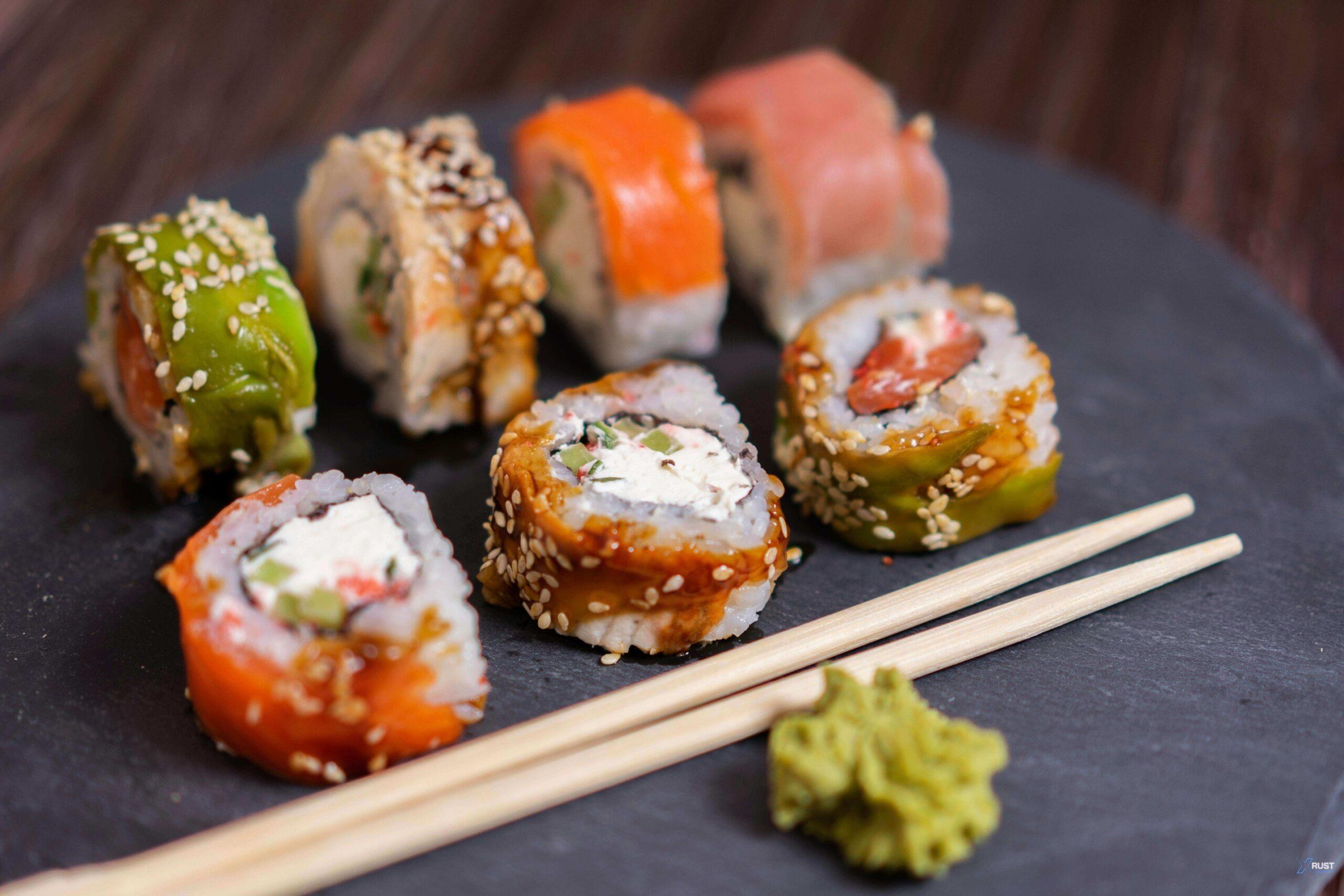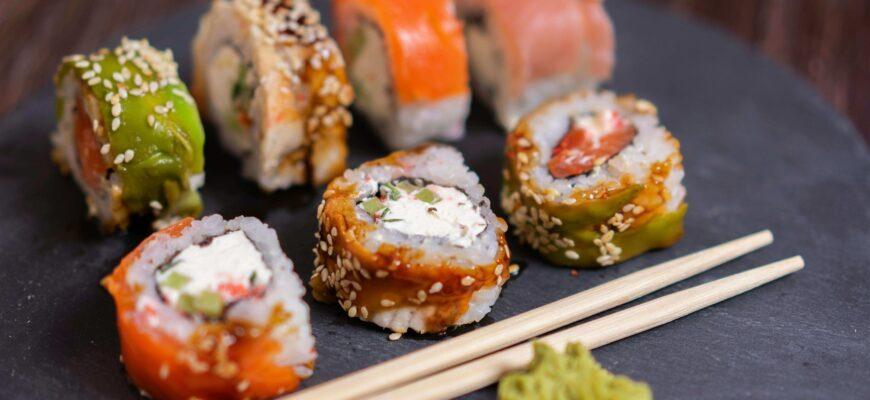**Japanese Rolls**
**History and Secrets of a Classic**
Rolls are not just slices of rice wrapped in nori with a filling. They are a true symbol of Japanese gastronomy, embodying centuries-old traditions of skilled masters. The first variations of sushi appeared in the 6th century: fish was salted and placed together with rice in barrels for natural fermentation. It wasn’t until the 19th century, when rice was no longer used as a preservative, that the predecessors of modern maki emerged—light snacks made from fresh seafood and rice that required no lengthy preparation.
In the 20th century, with the development of trade and tourism, Japanese rolls began to gain worldwide fame. Each region of Japan introduced its own features: in Osaka, they preferred large rolls with seafood, while in Kyoto, they favored refined, small maki with vegetable pastes. Today, in the menu of any sushi bar, you’ll find classic maki, spicy rolls, and large uramaki—inside-out rolls sprinkled with roe or sesame seeds.
**Ingredients and Technique: What Beginners Need to Know**
When first learning to make rolls, it’s essential to master the basic set of ingredients and equipment:
– **Sushi rice (shari):** Short-grain rice specifically for sushi—it sticks together but doesn’t turn into mush. It’s seasoned with rice vinegar, sugar, and salt in a ratio of 5–6 tablespoons of vinegar to 500 g of rice.
– **Nori:** Dried seaweed that holds the filling; store in a dry place and use within a month of opening the package.
– **Sushi knife:** Sharp, thin, and moistened with water before cutting; it ensures clean cuts without “squashing” the roll.
**Rolling Technique:**
1. Lay out a bamboo mat (makisu) and place a sheet of nori shiny side down.
2. Using slightly damp hands, spread sushi rice (about 100 g) over three-quarters of the nori.
3. Place a strip of filling along the short edge—fresh salmon, avocado, cucumber, or crab stick.
4. Using the makisu, roll it up tightly, pressing firmly at the start and leaving the edge of the nori empty for sealing.
5. Cut the roll into six to eight equal pieces, moistening the knife between cuts.
**Variations and Tips for Inspiration**
Personal experiments are one of the joys of home cooking. Try these techniques to add new colors to tradition:
– **Uramaki “Surprise”:** Roll the sushi traditionally, then coat the outside with finely chopped salmon or fish roe; add cream cheese and a thin strip of mango to the center for contrast.
– **Baked Rolls:** Form the roll, drizzle it with a mixture of mayonnaise and spicy sauce, sprinkle with teriyaki sauce, and bake under a grill until golden brown. Serve hot with a crispy exterior and warm filling.
**Useful Hacks:**
– Keep a small bowl of water and rice vinegar nearby—your hands should be damp to prevent the rice from sticking.
– Cool the rice to a warm state but not completely—cold rice loses its elasticity, while hot rice doesn’t hold its shape.
– Use natural marinades (soy sauce, mirin) to enhance the flavor of the filling without adding extra salt.
Diving into the world of sushi and maki is not just a culinary hobby—it’s a way to connect with Japanese culture and develop your own sense of flavor harmony. If you’ve already mastered the classic recipes, continue to push boundaries: experiment with unconventional fillings, truffle oil, and even exotic fruits.
Detailed author recipes, tips, and video tutorials can be found on the blog of the [Mama Mia restaurant](https://mamamia-pizza.ru/blog/rolly-syaki-maki-vse-o-populyarnom-yaponskom-blyude-i-luchshie-retsepty-ot-restorana-mama-mia/). Try, create, and enjoy the perfect combination of rice, seaweed, and imagination!
https://xrust.ru/girls/311105-japonskie-rolly.html










